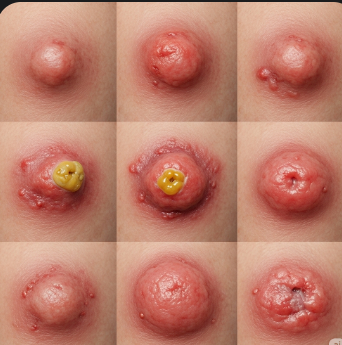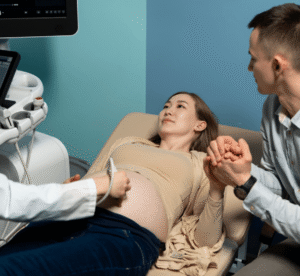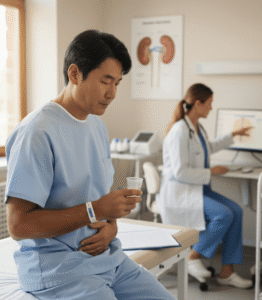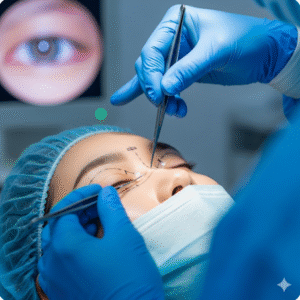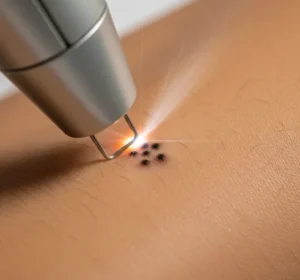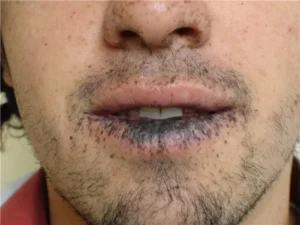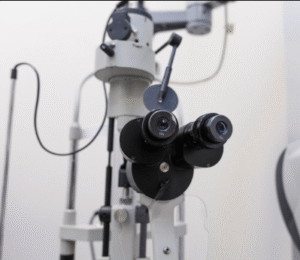Overview
Boils, medically known as furuncles, are painful, pus-filled infections of hair follicles or oil glands, usually caused by the bacteria Staphylococcus aureus. They can occur anywhere on the skin but are most common on the neck, face, armpits, shoulders, and buttocks.
In Korea, boils are commonly treated through dermatology clinics, general hospitals, and traditional medicine centers, with a focus on draining the abscess, controlling infection, and preventing recurrence. Korean healthcare emphasizes early intervention, hygiene education, and appropriate antibiotic use to prevent complications such as cellulitis or systemic infections.
What is a Boil?
A boil is a localized bacterial infection of a hair follicle, resulting in:
- Red, swollen, and painful nodules
- Accumulation of pus inside the lesion
- Often accompanied by inflammation of surrounding skin
Boils can develop individually or as clusters called carbuncles, which are deeper and more severe. They usually begin as a small, tender lump that grows rapidly over several days.
Symptoms
Boils present with distinct signs that often evolve over time:
- Red, raised, and tender bump on the skin
- White or yellow center indicating pus accumulation
- Swelling and warmth around the lesion
- Pain that worsens with pressure or movement
- Fever or malaise in cases of systemic infection
- Fatigue or general discomfort if multiple boils occur
- Occasionally, draining of thick yellow or green pus
Clusters of boils (carbuncles) may cause more severe symptoms, including chills and significant swelling.
Causes
Boils are primarily caused by bacterial infection, most commonly Staphylococcus aureus. Factors contributing to infection include:
- Breaks in the skin: Cuts, abrasions, insect bites, or acne
- Obstruction of hair follicles or oil glands
- Weakened immune system: Diabetes, HIV, or chronic illnesses
- Poor hygiene or frequent skin exposure to bacteria
- Skin conditions such as eczema or dermatitis
- Close contact with infected individuals or contaminated surfaces
Bacterial colonization and skin friction create an environment conducive to abscess formation.
Risk Factors
- Diabetes mellitus: High blood sugar increases susceptibility
- Immunocompromised state: Patients with HIV or on immunosuppressants
- Obesity: Increases skin folds and friction
- Poor hygiene or excessive sweating
- History of recurrent boils
- Skin trauma: Cuts, insect bites, or scratches
- Close contact environments: Gyms, dormitories, or crowded living spaces
Complications
While most boils are manageable, untreated or severe cases can result in:
- Cellulitis: Spread of infection to surrounding skin
- Abscess formation: Larger pus-filled cavities requiring drainage
- Sepsis: Rare but potentially life-threatening systemic infection
- Scarring or hyperpigmentation after healing
- Osteomyelitis or deep tissue infections in severe cases
- Recurrence: Chronic carriers of Staphylococcus aureus may experience frequent boils
Prevention
Preventing boils involves hygiene, skin care, and lifestyle measures:
- Regular handwashing and keeping skin clean
- Avoid sharing personal items such as towels, razors, or clothing
- Maintain proper skin care: Moisturize and treat minor cuts promptly
- Manage chronic illnesses: Control diabetes and other immune-compromising conditions
- Avoid tight or friction-inducing clothing
- Promptly treat minor skin infections to prevent progression
Treatment Options in Korea
Diagnosis
Korean dermatologists diagnose boils based on:
- Physical examination: Visual inspection of redness, swelling, and pus
- History of symptom onset and previous infections
- Culture tests: Occasionally performed to identify bacteria and antibiotic sensitivity
- Imaging: Rarely, ultrasound may be used to assess deeper abscesses
Medical Management
- Antibiotics: Prescribed for moderate to severe infections or recurrent boils
- Oral antibiotics such as cephalexin, clindamycin, or doxycycline
- Pain relief: Analgesics like acetaminophen or ibuprofen
- Topical antibiotics: For minor or superficial boils
Surgical and Interventional Management
- Incision and drainage (I&D): Standard treatment for large or painful boils
- Performed under sterile conditions in Korean clinics
- Ensures complete pus removal and promotes faster healing
- Warm compresses: Applied multiple times daily to promote drainage in early-stage boils
Supportive Care
- Wound care: Clean the area with antiseptic and keep it covered
- Avoid squeezing or popping the boil to prevent bacterial spread
- Monitor for signs of systemic infection such as fever or spreading redness
- Follow-up visits for recurrent cases to manage carrier status or underlying risk factors
Prognosis
The prognosis for boils in Korea is generally excellent with proper treatment:
- Most boils heal completely within 1–3 weeks with or without minor intervention
- Early drainage and antibiotics prevent complications
- Patients who practice good hygiene and manage underlying conditions experience fewer recurrences
- Severe or recurrent cases may require long-term monitoring to prevent complications or chronic infection

